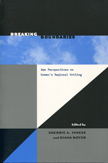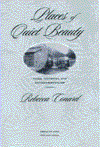Breaking Boundaries
“A stimulating collection of essays in which leading theorists of regionalism join with talented younger scholars in remapping the field. Revisionary in every sense, Breaking Boundaries asks fresh questions about traditional stalwarts, 'regionalizes' figures hitherto examined under other rubrics, and introduces readers to new authors and texts.”—Carolyn L. Karcher, author of The First Woman in the Republic: A Cultural Biography of Lydia Maria Child
“This is an excellent anthology. It complicates our ideas about 'regionalism,' links nineteenth- and twentieth-century writers, places issues of race and ethnicity at the center, makes us rethink the academy's usual (and limiting) preoccupation with fiction as the only important genre, and effectively deconstructs the scholarly trivialization of local color writing as a 'minor' American tradition. This is a volume that is challenging, not nostalgic. It looks back but also at the present, asking us how our thinking about the 'local' shapes and affects major issues today, such as the environment, race relations, gender dynamics, and attitudes toward sexuality.”—Elizabeth Ammons, author of Conflicting Stories: American Women Writers at the Turn of the Twentieth Century
These lively essays reveal the generational continuum of women's regional literature, which has always offered a voice to women and their concerns. By exploring the multiplicity of connections between women and regional writing and the subversive potential of regional writing to put forth social criticisms and correctives, Breaking Boundaries charts some of the major ways in which this literary genre is of particular importance to today's writers.
Part One - Reenvisioning Traditional Regionalism
1. Origins of American Literary Regionalism: Gender in Irving, Stowe, and Longstreet — Marjorie Pryse
2. Theorizing Regionalism: Celia Thaxter's Among the Isles of Shoals — Judith Fetterley
3. “Why, why do we not write our side?” Gender and Southern Self-representation in Grace King's Balcony Stories — Lori Robison
4. Emplotting National History: Regionalism and Pauline Hopkins's Contending Forces — Francesca Sawaya
5. Making the Strange(r) Familiar: Sarah Orne Jewett's “The Foreigner” — Cynthia J. Davis
6. Regionalist Bodies/Embodied Regions: Sarah Orne Jewett and Zitkala-Sa — D.K. Meisenheimer, Jr.
7. “There was a part for her in the Indian life”: Mary Austin, Regionalism, and the Problems of Appropriation - Noreen Groover Lape
Part Two - Expanding the Genre
8. Writing the Midwest: Meridel Le Sueur and the Making of a Radical Regional Tradition — Julia Mickenberg
9. “Wherever I am living”: The “Lady of the Limberlost” Resituates — Barbara Ryan
10. In Pursuit of Regional and Cultural Identity: The Autobiographies of Agnes Morley Cleaveland and Fabiola Cabeza de Baca — Becky Jo Gesteland McShane
11. “A mutual journey”: Wilma Dykeman and Appalachian Regionalism — Patricia M. Gantt
12. Sidestepping Environmental Justice: “Natural” Landscapes and the Wilderness Plot — Krista Comer
13. Not Just Any Land: Linda Hasselstrom at Home on the American Grasslands — John T. Price





